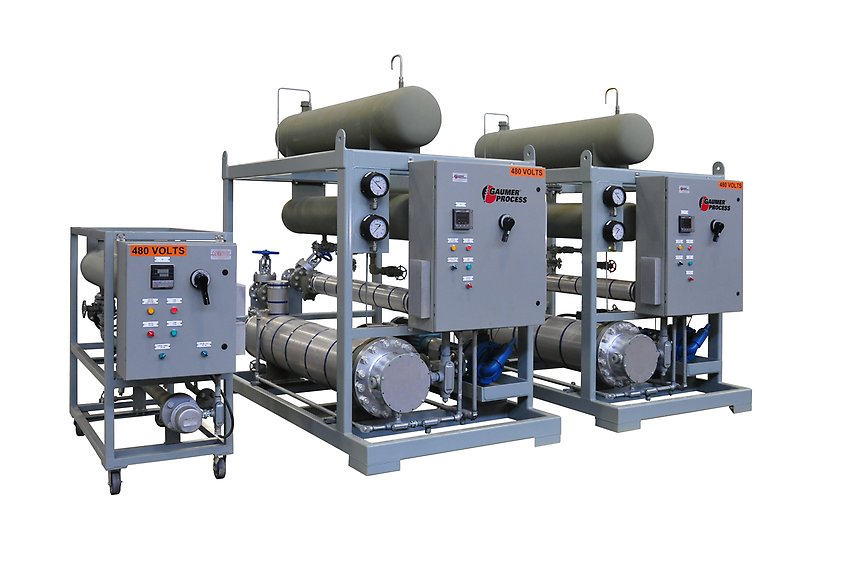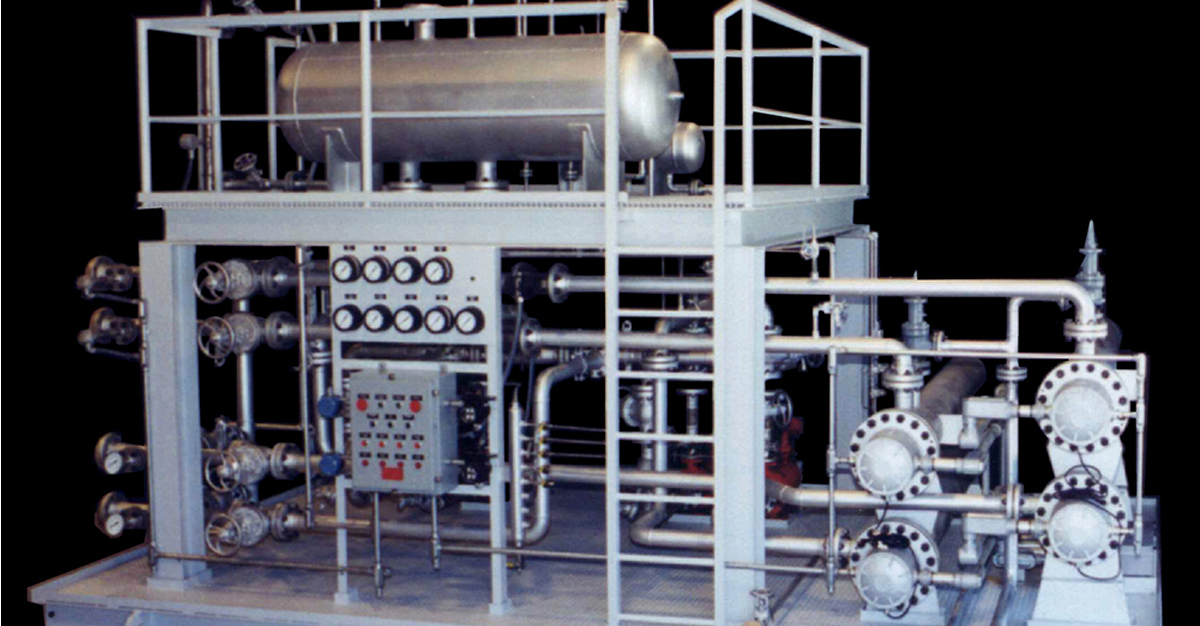How DVS Heat Transfer Systems Are Redefining Energy Efficiency in Industrial Cooling
Wiki Article
Checking out the Advantages and Applications of Heat Transfer Solutions in Modern Industry
Heat transfer systems play a vital duty in modern-day market. They include different mechanisms such as radiation, convection, and transmission, each adding to reliable thermal management. Industries like production and aerospace benefit considerably from these systems. As improvements continue, the integration of innovative products and modern technologies assures to boost energy performance. This development increases important inquiries regarding the future implications for sustainability and operational prices throughout numerous industries. What lies in advance in this recurring transformation?Recognizing Heat Transfer Concepts
Heat transfer principles are essential to the operation of numerous industrial systems. These concepts include the systems of transmission, radiation, and convection, each playing an important role in handling thermal energy. Comprehending conduction includes analyzing exactly how Heat moves with solid products, while convection concern Heat transfer in liquids, driven by fluid movement. Radiation, distinct from the other two, includes power transfer via electromagnetic waves. The effectiveness of Heat transfer influences system performance, energy usage, and total performance. Efficient thermal monitoring is necessary in processes such as air conditioning, Heat, and home heating healing. By mastering these concepts, industries can enhance their procedures, minimize power expenses, and improve equipment longevity, therefore adding to a much more lasting and effective commercial landscape.Key Sorts Of Heat Transfer Equipments
While numerous sectors utilize Heat transfer systems for diverse applications, a number of key types stick out as a result of their details features and performances. The most common kinds consist of transmission, convection, and radiation systems. Transmission systems transfer Heat via straight get in touch with in between products, making them efficient in solid-state applications. Convection systems, on the other hand, use liquid motion to transfer Heat, suitable for heating or cooling gases and fluids. Radiation systems run without a medium, relying upon electromagnetic waves to transfer Heat, suitable for high-temperature environments. Each kind offers distinct objectives, permitting markets to customize their Heat transfer remedies based on functional demands, power effectiveness, and cost-effectiveness. Comprehending these systems is important for optimizing efficiency in numerous commercial settings.Industrial Applications of Heat Transfer Technologies
The application of Heat transfer technologies in sector plays an essential function in enhancing power efficiency and maximizing procedures. DVS Heat Transfer Systems. By carrying out sophisticated Heat exchange systems, firms can significantly reduce their ecological influence while boosting total performance. This assimilation not just promotes sustainability however likewise straightens with contemporary regulatory and customer demands for greener practicesPower Performance Improvements
As markets increasingly focus on sustainability, power effectiveness renovations in Heat transfer modern technologies have actually become necessary for minimizing operational prices and environmental effect. Boosted Heat exchangers, for example, utilize innovative products and layouts to make best use of thermal performance while lessening power usage. Integrating variable speed drives in pumping systems allows for much better control of liquid circulation, leading to considerable energy financial savings. The execution of smart sensors and automation provides real-time tracking, allowing modifications that optimize energy usage. In addition, waste Heat recovery systems capture excess thermal energy, converting it right into functional power. These advancements not only improve energy effectiveness however additionally add to a much more lasting industrial landscape by lowering greenhouse gas emissions and sustaining compliance with ecological laws.Process Optimization Techniques
Process optimization methods are essential in enhancing the efficiency and effectiveness of Heat transfer modern technologies in industrial applications. These techniques involve refining processes to make best use of Heat transfer efficiency while reducing energy consumption and functional prices. Approaches such as computational liquid characteristics (CFD) modeling enable engineers to simulate and analyze Heat transfer circumstances, recognizing locations for enhancement. Furthermore, real-time surveillance systems can give valuable information on temperature gradients and flow prices, making it possible for adjustments that optimize efficiency. Additionally, implementing innovative control approaches, such as anticipating analytics, can enhance system responsiveness to varying functional needs. By using these optimization methods, industries can accomplish higher thermal efficiency, lowered downtime, and enhanced item high quality, ultimately leading to raised competitiveness in the marketplace.
Environmental Impact Reduction
While industrial Heat transfer modern technologies are necessary for functional efficiency, their application likewise provides opportunities for substantial environmental effect decrease. By boosting energy effectiveness, these systems decrease gas usage, leading to lower greenhouse gas exhausts. Advanced Heat exchangers can recuperate waste Heat, redirecting it to preheat incoming liquids, therefore decreasing power needs. Furthermore, the assimilation of Heat transfer innovations in renewable resource systems, such as solar thermal and geothermal applications, sustains the shift to sustainable techniques. Industries that use these technologies also take advantage of minimized functional costs and enhanced regulative conformity. Overall, the tactical application of Heat transfer systems not just strengthens performance but also cultivates an extra lasting industrial landscape, contributing to global environmental goals.Advantages of Efficient Heat Transfer Systems
Reliable Heat transfer systems offer significant advantages in modern sector, mostly with improved energy efficiency and cost reduction. By optimizing thermal management, these systems minimize energy waste, resulting in lower operational prices (DVS Heat Transfer Systems). Businesses can attain better sustainability and enhanced success.
Energy Performance Improvements
As sectors progressively focus on check it out sustainability and cost-effectiveness, power performance improvements in Heat transfer systems have emerged as a crucial focus. Improved effectiveness in these systems brings about minimized power intake, allowing centers to operate more sustainably. By enhancing Heat transfer techniques, sectors can decrease waste Heat and accomplish much better thermal administration, substantially lowering their environmental impact. Advances in technologies such as Heat exchangers and insulation materials add to improved efficiency and reliability. Additionally, applying energy-efficient Heat transfer services not just sustains conformity with governing requirements however likewise fosters a culture of innovation within organizations. Eventually, these enhancements are vital in lining up industrial procedures with worldwide energy preservation objectives, leading the way for an extra lasting future in production and handling industries.Cost Decrease Opportunities
By enhancing Heat transfer systems, industries can disclose considerable price reduction possibilities that improve their bottom line. Reliable Heat transfer lowers power consumption, bring about reduced energy expenses and reducing functional expenditures. Furthermore, enhanced system efficiency decreases the requirement for repair and maintenance, additionally conserving prices gradually. Improved Heat transfer can also prolong equipment life expectancy, allowing business to postpone capital expenditures on substitutes. Furthermore, waste Heat recuperation systems can transform excess Heat right into usable power, better driving down expenses. These systems not just improve processes but likewise add to sustainability campaigns, positioning business favorably in a significantly eco-conscious market. Generally, the monetary benefits of reliable Heat transfer systems are necessary and substantial for affordable advantage.Advancements in Heat Transfer Solutions
Just how can modern-day industry enhance its procedures via innovative Heat transfer services? By embracing innovative products and innovations, industries can substantially boost thermal performance and efficiency. Innovations such as nanofluids, which enhance Heat transfer abilities past traditional fluids, and stage modification materials that save and release thermal power, are gaining traction. Furthermore, the assimilation of wise sensors and IoT devices enables real-time surveillance and optimization of Heat transfer procedures, reducing waste and improving system responsiveness. Additive production methods allow the development of even more complicated Heat exchangers that make best use of surface location while decreasing material usage. Jointly, these innovations drive operational effectiveness and produce competitive benefits in different markets, including aerospace, power, and manufacturing.The Duty of Heat Transfer in Sustainability Efforts
While the press for sustainability remains to improve industries, the duty of Heat transfer technologies becomes increasingly crucial in achieving ecological goals. Reliable Heat transfer systems promote energy performance by enhancing thermal administration in numerous procedures, significantly lowering energy intake and greenhouse gas exhausts. additional resources For circumstances, advanced Heat exchangers are made use of in commercial applications to redeem waste Heat, consequently lessening energy waste. In addition, developments such as stage change materials improve thermal storage space, contributing to renewable resource integration. Furthermore, the fostering of sustainable fluids in Heat transfer systems can minimize ecological impact. By prioritizing effective Heat transfer, markets not only improve operational performance however likewise straighten with international sustainability initiatives, fostering a cleaner, more sustainable future.Frequently Asked Inquiries
How Do Heat Transfer Solutions Effect Power Expenses in Production?
Heat transfer systems considerably influence energy costs in manufacturing by enhancing effectiveness, decreasing waste, and enhancing thermal administration. These enhancements cause reduce operational costs, ultimately benefiting overall productivity and success in industrial operations.What Upkeep Is Needed for Heat Transfer Solutions?
Maintenance for Heat transfer systems includes regular evaluations, cleaning of components, checking liquid degrees and conditions, replacing used components, and making sure correct insulation. These activities improve effectiveness, extend lifespan, and avoid costly breakdowns in operation.Are There Safety Interest In Heat Transfer Solutions?
Safety and security interest in Heat transfer systems include potential leakages, pressure build-up, and thermal hazards. Appropriate design, normal maintenance, and adherence to safety and security protocols are vital to alleviate these risks and ensure secure operation in commercial environments.
Just How Can I Select the Right Heat Transfer System for My Business?
Selecting the appropriate Heat transfer system includes evaluating aspects such as efficiency, application demands, spending plan restraints, and safety standards. A thorough evaluation of these aspects will certainly help ensure excellent performance and dependability in service procedures.What Prevail Failures in Heat Transfer Systems and Their Causes?

Comprehending conduction includes examining how Heat moves via solid materials, while convection pertains to Heat transfer in fluids, driven by liquid motion. By maximizing Heat transfer approaches, markets can decrease waste Heat and accomplish far better thermal monitoring, significantly reducing their environmental effect. Waste Heat recuperation image source systems can transform excess Heat into useful energy, additionally driving down costs. Progressed Heat exchangers are utilized in commercial applications to redeem waste Heat, thereby minimizing energy waste. Common failures in Heat transfer systems consist of leakages, rust, and ineffective Heat exchange.
Report this wiki page